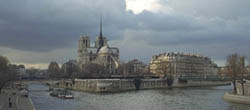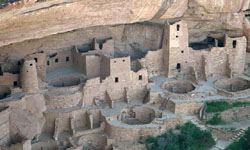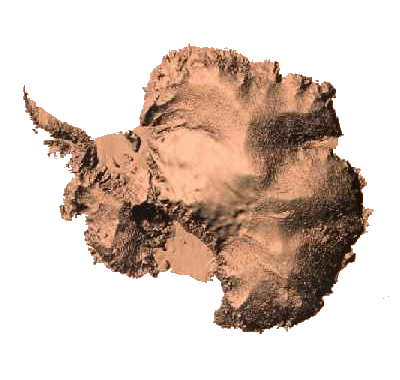Antarctica

A Complete Guide to its History, People, Cities and Culture



Photo Credits, top to bottom: Delphia, the city where visitors first arrive on the continent; Semei, on the northeast coast of Antarctica, known for its seafood, computer language industry and telekinesis experiments; Balloonists pass above the green hills surrounding Delphia, on their way back to the city; Detail of the ruins at Mimosa, where the most famous battle in Antarctican history occurred in 1403 B.C.
BUY MY BOOKS | HOME | FICTION | ESSAYS | ON-LINE DIARY | MARGINALIA | GALLERY | INTERACTIVE FEATURES | FAQ | SEARCH ENGINE | LINKS | CONTACT
www.ralphrobertmoore.com
the official website for the writings of
ralph robert moore

Tourism
So, you are thinking of visiting Antarctica?
An application for admission to Antarctica may be picked up at any Antarctican embassy, or may be requested from one of the embassies by mail or phone.
The oft-quoted remark, that Antarcticans judge applications based on 'talent and temperament', seems to be true. To be approved for a visit, a person should have some interest in creativity, whether that be the arts, home-decorating, cooking, gardening, software, science or similar pursuits, and should also be what is generally referred to as a 'good person'. There have been many questions asked at conferences about the qualification process, so by way of elaboration, let it be said here that Antarcticans do not expect an applicant to be an accomplished, recognized artist, nor do they expect the applicant to be someone who never loses their temper, never does something foolish, or never feels jealousy or depression. Being in Antarctica in and of itself appears to have a stimulating and soothing effect on people, which Antarcticans realize, so even someone who has not yet spent much time being creative, or who has had a troubled life up to this point, is usually still invited to visit. The truth is, most people who apply to visit Antarctica are accepted. Another question often asked is how detailed the application is. The application is a single sheet of paper, consisting of nine questions. From how these nine questions are answered, Antarcticans can apparently tell whether or not approval of the application would make sense. None of the nine questions concern themselves with the applicant's medical or financial history, or with the applicant's age, gender, race, religious or political beliefs, or sexual orientation.
If you are approved for a visit you will be invited to the nearest embassy at Antarctica's expense for a private lunch, during which time an embassy employee will answer any questions you may have about Antarctica itself, whether philosophical or practical, or about the mechanics of your visit. Visits are generally approved for a one year stay, meaning that if your application has been approved, you will be invited to live in Antarctica for a twelve-month period. During this time you will be free to travel wherever you wish to throughout the continent, although it is customary for no one, including native Antarcticans, to visit the three Hopes, large areas of the interior set aside where wildlife may live untouched and unseen by Man. You will be provided with sufficient funds upon your arrival in Antarctica to live a very comfortable existence during this period (the monies come from contributions made by Antarcticans. You are not expected to pay back any of the amount you spend). At the end of the year, you will be asked if you would like to remain in Antarctica, or if you would prefer to leave. If you choose to return, your airflight home is also paid for, and assistance is provided, financial and otherwise, in helping you obtain employment similar to the employment you had prior to your visit. In most cases, shorter visits (a weekend, a week) are not encouraged, because it is felt it is just not possible to experience Antarctica in so short a time. If you are invited to Antarctica, it is not an invitation to be photographed alongside several famous sites and then depart; it is an invitation to consider a different land in which to live.
Once the details of the visit are set, it is up to you to make arrangements to arrive at one of the several departure points around the world where air travel to Antarctica is established (as of this writing, current points of departure are Dallas, Texas, U.S.A.; Rio de Janeiro, Brazil; London, England; Hong Kong, China; Sydney, Australia; and Brazzaville, Congo). You must pay the expense of traveling to the point of departure; there is no charge for the flight from the point of departure to Antarctica.
At the point of departure, you and your belongings will be screened briefly and painlessly with a handheld device which operates on sound waves and is used to make certain there are no insects, seeds, bacteria, etc. present which might otherwise inadvertently make their way to the continent. This procedure lasts a moment only, and is done with you fully dressed, suitcases left closed, and any film you may be carrying undamaged. For the record, your physical person is not searched, nor are any of your belongings. Antarcticans are strong believers in a right to privacy.
You will likely share the transcontinental flyer taking you to Antarctica with a half dozen or so other people also about to experience living in Antarctica.
All new visitors arrive in Delphia, located on the southern coast of the continent. Each person, couple or family is greeted by an Antarctican who has volunteered to help visitors orient themselves in this new land.
The most commonly reported reaction people have visiting Antarctica for the first time is a sense of exhilaration. Visitors speak of the beauty of the land, the purity of the sky, the freshness of the air, the atmosphere of freedom and privacy, the contagious sense of peace and joy among the people. This exhilaration begins when you leave the terminal at which you arrived and behold your first glimpse of Antarctican life, the city of Delphia.
Delphia is built along a series of beautiful blue and emerald bays, crystal clear to a depth of 1,000 feet, its tree-lined blocks filled with parks, rivers and pastel and granite buildings, the tallest of which is twenty stories. Brightly colored hot air balloons float silently above the city, often late into the evening; walking home along the canals from a midnight meal with friends, you may be able to hear, in the sky, the occasional murmur of conversation and laughter. Although you are free to do whatever you wish as soon as you disembark from the transcontinental flyer, visitors are strongly urged to spend their first day in Antarctica locating a residence, because of the physical adjustment most visitors go through their first twenty-four hours in Antarctica. Your volunteer guide will fly you to a number of sites he or she thinks would enchant you based on talking to you: this may be a glass and stone suite located atop one of the City's modest towers, overlooking the bays, or a small townhome deep within one of the many lively neighborhood sections, or a quiet cottage off by itself on one of the many cliffs overlooking the ocean. You are welcome to change your residence as often as you prefer, although many people grow attached to the home they first chose, their first day on the continent.
As alluded to, nearly all visitors to Antarctica go through a brief period of physical adjustment when they first arrive on the continent. A few hours after landing, and by then in their own, newly-selected home, visitors are likely to experience a hoarseness of voice, accompanied by a sense of fatigue and, often, mild diarrhea. Some of these symptoms may be psychological, of course, but it is believed they are in large measure the result, ironically, of breathing unpolluted air, drinking pure water, and eating nontoxic food. This period of adjustment lasts from twelve to twenty-four hours, and then does not return. To cope with it, most first-time visitors spend their first day in bed, talking, watching local television, drifting in and out of sleep, snacking on any of a wide variety of foods which can be delivered to their home (home delivery of food and other products is much more common in Antarctica than it is elsewhere. Nearly any type of food can be home-delivered. Most people report the meals they receive through home delivery are of a higher quality, and far more delicious, than restaurant meals they've eaten elsewhere in the world.) As has been mentioned in another section, Antarcticans, for whatever reason, maintain their ideal weight no matter how much food they consume, or the type of food. Western nutritionists have been curious to see if non-Antarcticans visting the continent would experience this same effect, and although it is still too early to draw any definitive conclusions, it does apppear that visitors may also consume large quantities of food without gaining weight, and in fact will often lose weight regardless of the amount of food they eat, until they, too, are at their ideal weight. Whether this phenomenon is caused by the food itself, or the water, or something else, is not known at this time.
Once the initial period of physical adjustment ends, you will find yourself with much more energy than ever before, and a strong sense of well-being.
You are now ready to start exploring.
Your guide will show you first how to operate a flyer, the chief means of private transport in Antarctica.
Flyers come in different sizes, but most are built to accommodate two to four adults. The typical flyer is slightly larger than an automobile, and is sometimes described as looking like an "upside-down boat". Although flyers have tires which can be lowered for road travel, they are most often, as their name implies, used for air travel from one location to another.
Visitors often express some trepidation initially at using a flyer, believing them to be dangerous, but in fact in the four hundred years of their use, there has never once been a fatality from a flyer. This is in large part because unlike a car, where the owner is the operator, a flyer operates automatically, based on the instructions you give it. Flyers have no steering wheels or manual controls.
Antarcticans tend to develop a great deal of affection for their flyer, much like people elsewhere in the world do towards their automobiles. A flyer is virtually indestructible, comes on a moment's notice when called, and will wait patiently for you wherever you are. Flyers make use of artificial intelligence technology, which Antarcticans refer to as "self-generated filtering", so that they can carry on intelligent conversations with you to a remarkable degree, and have access to the full range of data available on the Antarctican Internet.
While on the subject of flyers, we should spend a little time discussing travel in general.
As you will notice during your stay in Delphia, Antarctican cities do not have any streets. Delphia, like most Antarctican cities, is laid out like an immense park, with buildings clustered throughout the trees, lakes and rivers, joined to each other, depending on the area of the city, by pedestrian boulevards, bridges, garden walkways, or grassy paths. For this reason, when using a flyer within the city, your flyer will transport you to the "park pad" nearest your destination (park pads are scattered unobtrusively throughout the cities). It is then a short walk to where you wish to go, or you may use a trolley. Automated trolleys run on rails throughout the cities, and can take you from your flyer to your specific destinaton, and from there to another store or restaurant you wish to visit, or return you to your flyer. Although most people use their flyers to travel by air from one city to another, there are two-lane highways winding along the coast all around the continent for those who wish to travel by road, at which point the flyer's tires are used. Flyers are powered based on the slow molecular decomposition of certain metals. A thick sheet of this energy source, roughly six inches by six inches, lasts for approximately 100,000 miles. The sheets themselves are inexpensive.
After a week or so in Delphia, most visitors start exploring the continent, a journey that normally lasts several months. Many visitors, half-way through the first year, will return to whichever residence they have decided to call home in Antarctica, to get more of a feel for the day-to-day experience of living in Antarctica, shopping in the local stores, planting a garden, visiting the neighborhood restaurants, museums, and theaters. People often talk of this period as a time when they feel great inner peace, and physical well-being. There is a tendency to read more, to go on long walks in the woods and along the shores, to explore the quiet valleys, to picnic alongside the rivers, to paint outdoors.
As your first year in Antarctica comes to a close, you will be asked if you'd like to stay, or if you want to leave (you are, of course, free to leave at any point, even after the first day, but most people appreciate having a full year to make up their mind).
If you do stay, your guide or a number of volunteer associations will help you find a job, if you would like one. As stated elsewhere (please see People), because of the low cost of living in Antarctica, Antarcticans generally work only four months out of each year, and only three days a week. The rest of their time is spent pursuing their own interests. Working for money plays a very small role in Antarcticans' lives.
print this article